Solid Wallpaper | What It Is + Ideas for Using It
Very rarely do I come across a product that quite literally opens up a whole new world of possibilities for me as a renter. But such was the case with my recent discovery of solid wallpaper. As a lover of all things patterned, it’s not really something I ever considered using. After all, you can get the same effect with a can of paint. But as I’ve grown weary of the mess and commitment of painting our rental walls lately, solid wallpaper has become a welcome alternative that I suddenly can’t seem to get enough. Let me show you what I mean!
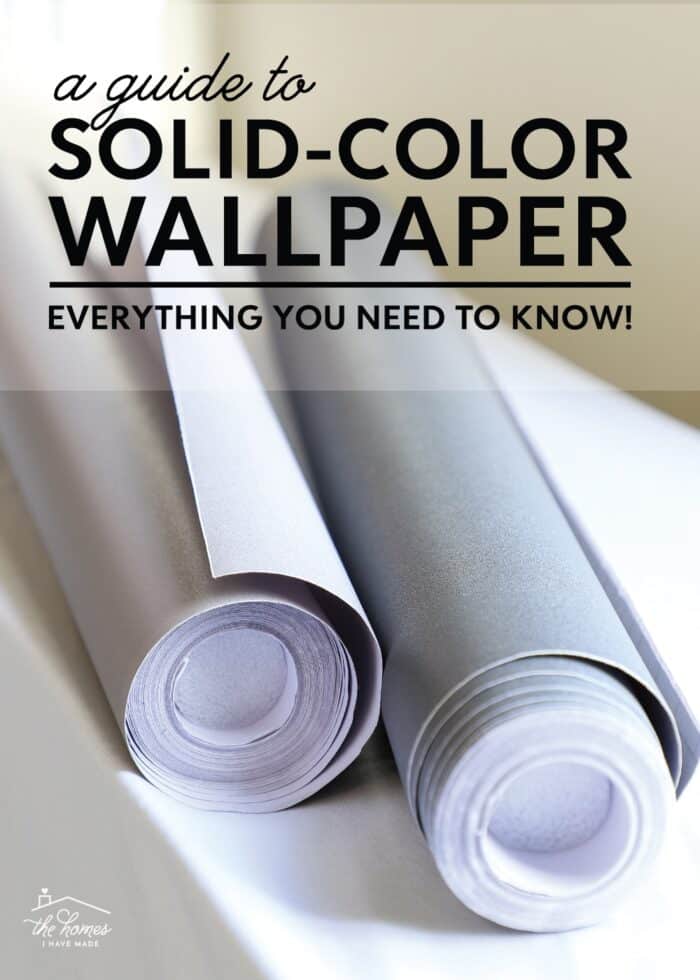
What Is Solid Wallpaper?
Solid wallpaper is precisely what it sounds like: wallpaper that is a single solid color instead of a pattern.
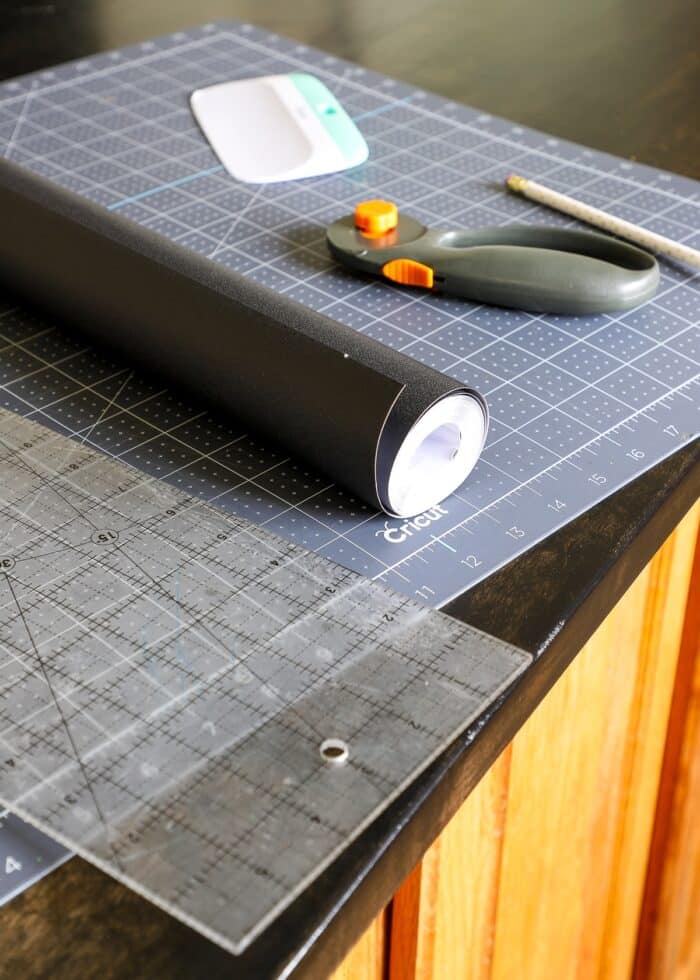
When put on a wall, it gives the impression of a single, solid, saturated color…just as if the wall (or…ummm…ceiling) was painted.
Most versions are peel-and-stick and go up and come down just as any other peel-and-stick product does. Although not available in nearly the number of colors as paint, I’m seeing more and more hues pop up lately.
Why Use Solid Wallpaper?
I first used solid black wallpaper as a “liner” under my peel and stick tile. Admittedly at the time, I viewed it more as shelf liner or a “protective” covering. Not at all something I’d intentionally use to decorate our walls.
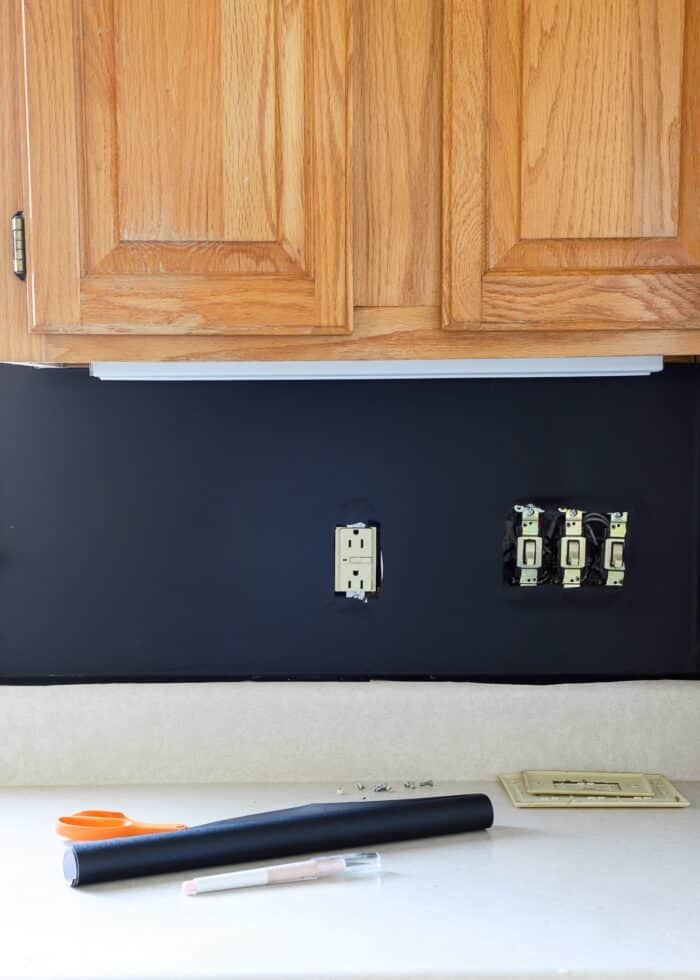
But then I was so incredibly impressed by how easy it went up and how well it covered the wall that I started to experiment with it more. Here are just a few of the things I really love about it:
Mess Free
No doubt, the biggest appeal of using solid wallpaper is that you completely escape the mess and hassle of paint. In fact, wallpapering a single accent wall will take you a fraction of the time and involves practically zero cleanup.
If you are not allowed to paint your walls or you just aren’t up for the work, solid wallpaper gives you the same look without the mess.
Color Without Pattern
If you’ve always been attracted to the mess-free nature of wallpaper but are generally apprehensive of bold patterns in your spaces, the solid version is a great alternative. Solid wallpaper will allow you to fully change the look of your wall(s) without the busyness usually found on most wallpapers.
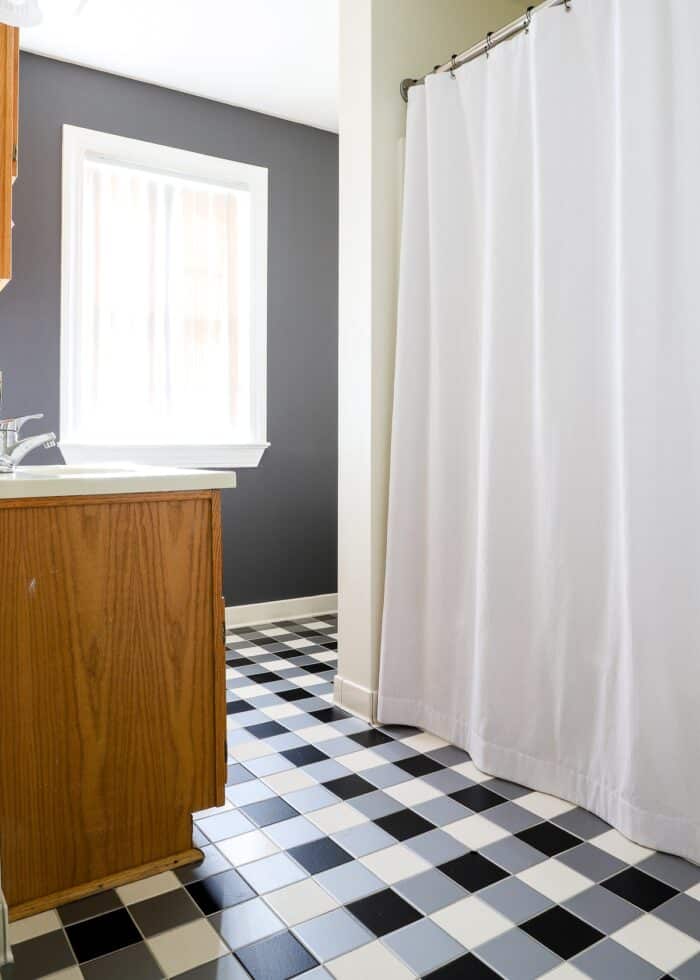
Very Little Waste
When you hang wallpaper with a pattern on it, there is often a lot of waste because you have to line up each panel’s design as you work across a wall. With larger patterns (like our foyer staircase), you can sometimes end up with an entire roll’s worth of unusable scraps alone (which equals a lot of wasted money!)
But when there is no pattern repeat to match up, there is literally zero waste. Where you trim one panel width becomes the beginning of the next one. As such, a solid wallpaper installation is much more cost effective compared to a patterned paper installation.
Easy Application
One of the hardest parts of hanging wallpaper is matching up the pattern and perfectly aligning the seams. But no pattern on the paper itself means no complicated matching or mis-matched seams. I even found that you can overlap panels without much notice at all!
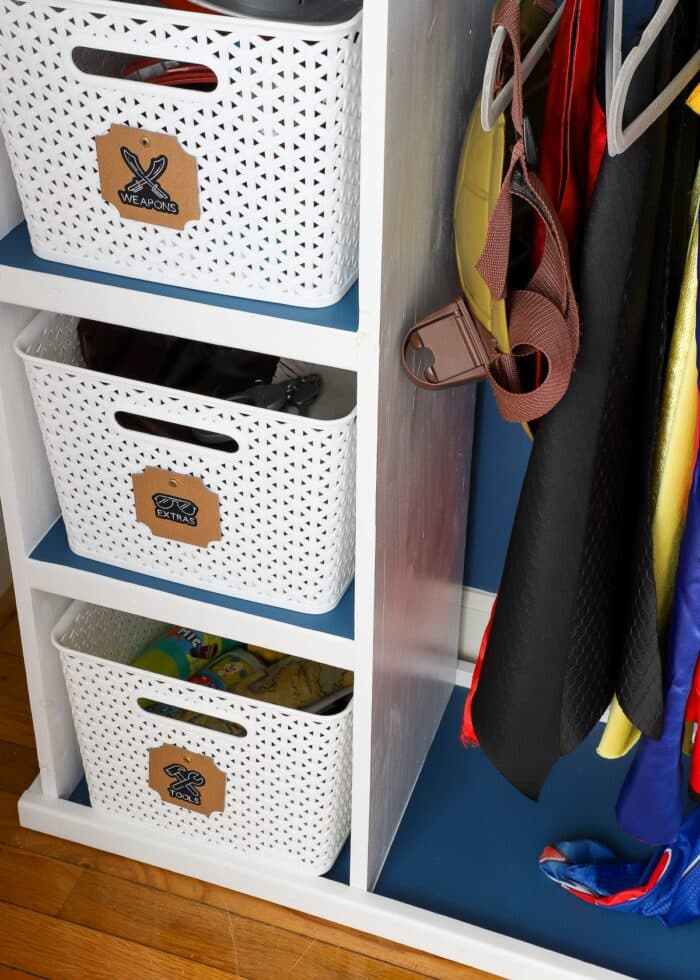
Blue Solid Wallpaper
Why NOT Use Solid Wallpaper?
While there are some great reasons to consider solid removable wallpaper, there are also a few “cons” to keep in mind before going this route for a wall update.
The Cost
In general, wallpaper will always be more expensive than a can of paint. And although these rolls are longer and cheaper than traditional wallpaper, you’d still need A LOT to wallpaper an entire room; and the cost will definitely add up. So if you are looking for the most budget-friendly solution to changing an entire room’s color, paint is likely still your best bet.
That said, compared to some fancier patterned papers, the solid version is on the cheaper side and comes in very long rolls, making it an economic choice for single feature or accent walls.
Potential for Damage
As I covered in this post (Does Peel and Stick Wallpaper Damage Walls?), there is always a risk that peel and stick wallpaper will damage the underlying paint or wall. While I would always choose to patch a few small areas rather than re-paint an entire wall, this is something to remain aware of.
Lack of Color Selection
As mentioned before, single color wallpaper doesn’t come in near the selection that paint does. So if you need a very particular color for your wall, you’re better off with paint. However, if you’re sticking to neutrals or primary colors, you can likely find something that will work!
Ideas for Using Solid Wallpaper
Okay, now that I’ve opened up your eyes to solid wallpaper, let me share a few ideas for using it in your home!
Accent Wall
Solid wallpaper is a great way to quickly and easily create a feature wall or even create a solid color background for photos or parties.
This sunshine wall was feeling a bit too much to me after I added pattern to the tile floor. Two rolls of grey wallpaper and about 45 minutes had the bathroom totally changed and a bit better on the eyes.
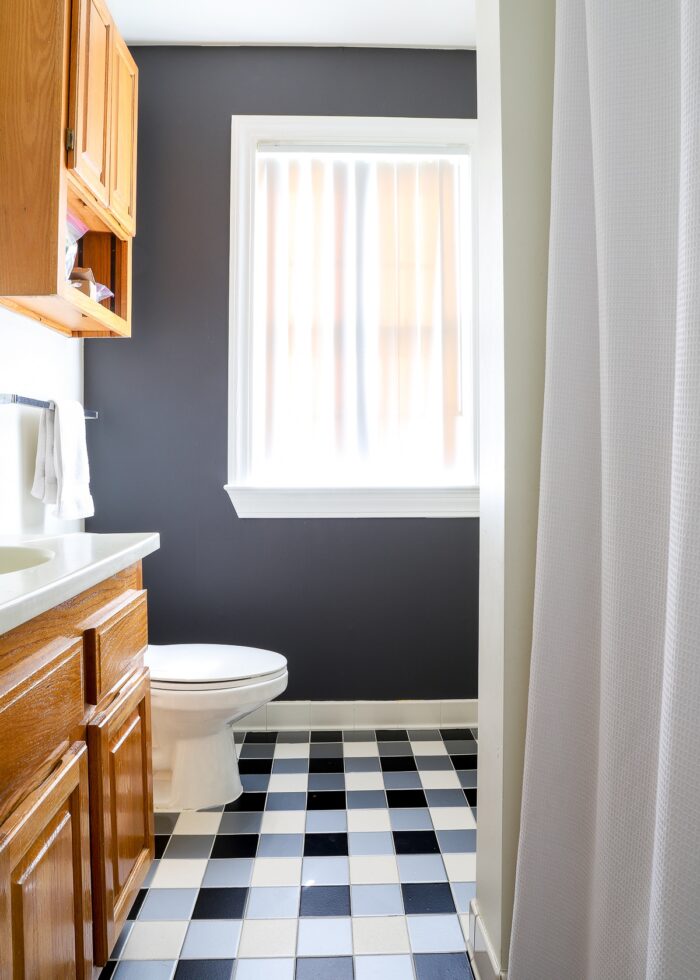
Ceiling
I knew the strange ceiling in our powder room would benefit from some sort of focal feature. But once I added pattern to the floor, I realized a solid color was my best option. Painting ceilings is NOT among my favorite jobs, so I used easy-to-remove black wallpaper instead.
In general, applying wallpaper to a ceiling isn’t easy either, but because I didn’t have to match patterns and could overlap seams, it went up in less than an hour!
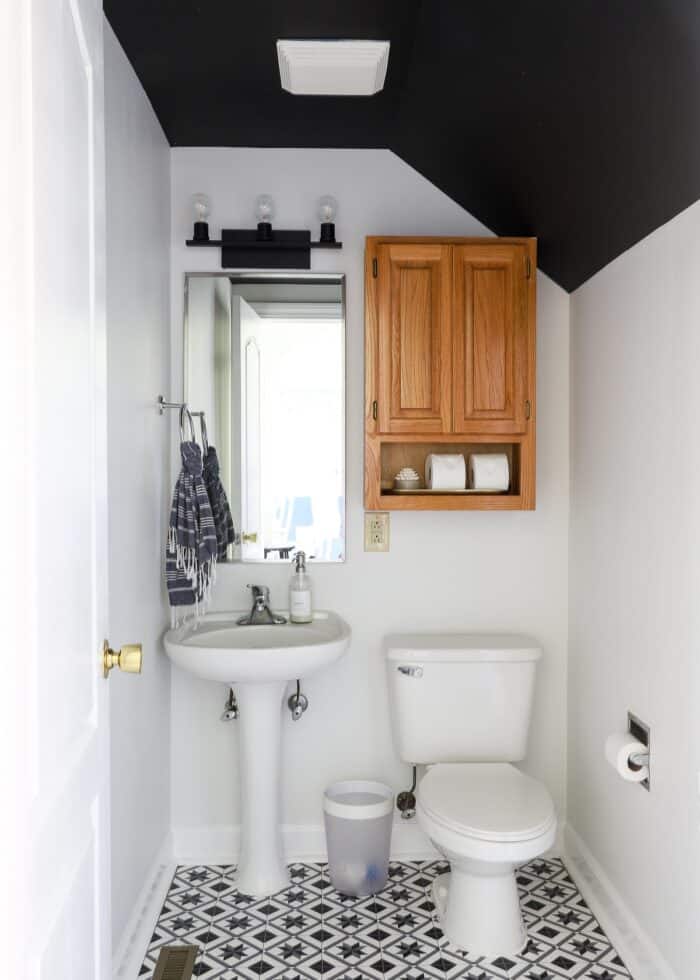
Stripes
Does anyone remember our striped family room in our previous North Carolina house? That room was my pride and joy for many years because of how much work it was and how great it looked.
When we wanted to add a similar funky wall treatment to my tween’s current bedroom, I had a feeling we could skip the paint and get the same effect with two different colors of wallpaper.
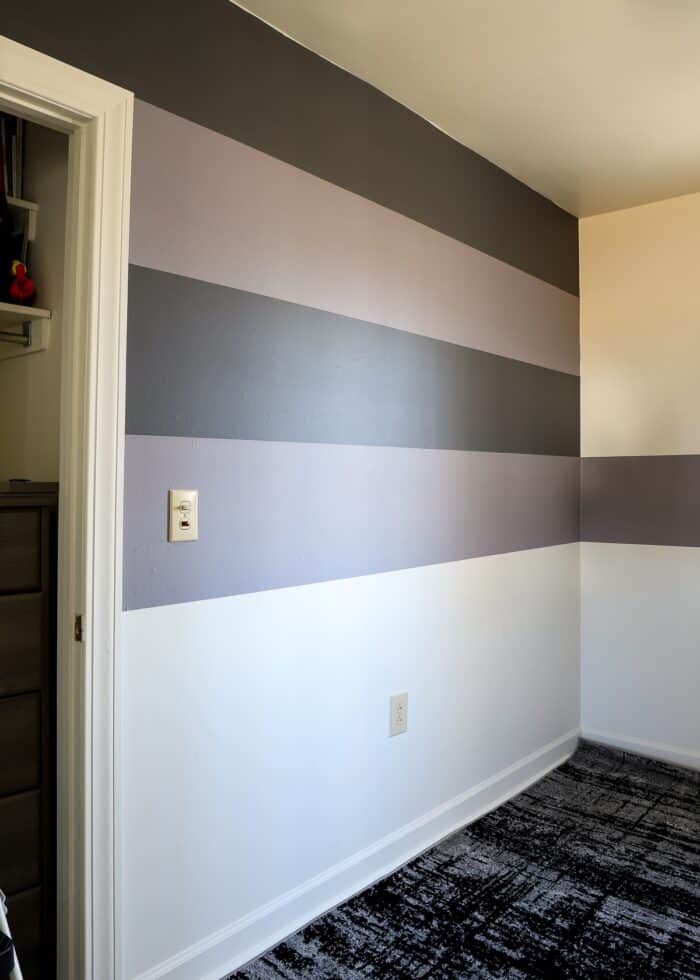
Dark Grey Wallpaper | Light Grey Wallpaper
The best part? No measuring or taping or even pre-cutting! We just applied the rolls horizontally around the room and trimmed at the corners. You’d never guess this wall feature isn’t paint, even in person!
TIP! Stripes could also be done vertically, on diagonal, or to create a plaid/check pattern.
Half Wall
Although I haven’t done this personally with solid wallpaper (only using paint), I do think this product could also be a great solution for adding a “half wall” to rooms or nurseries. Adding color to the bottom (or top) of your wall can be just enough to update the room but will cost a lot less than a full room installation!
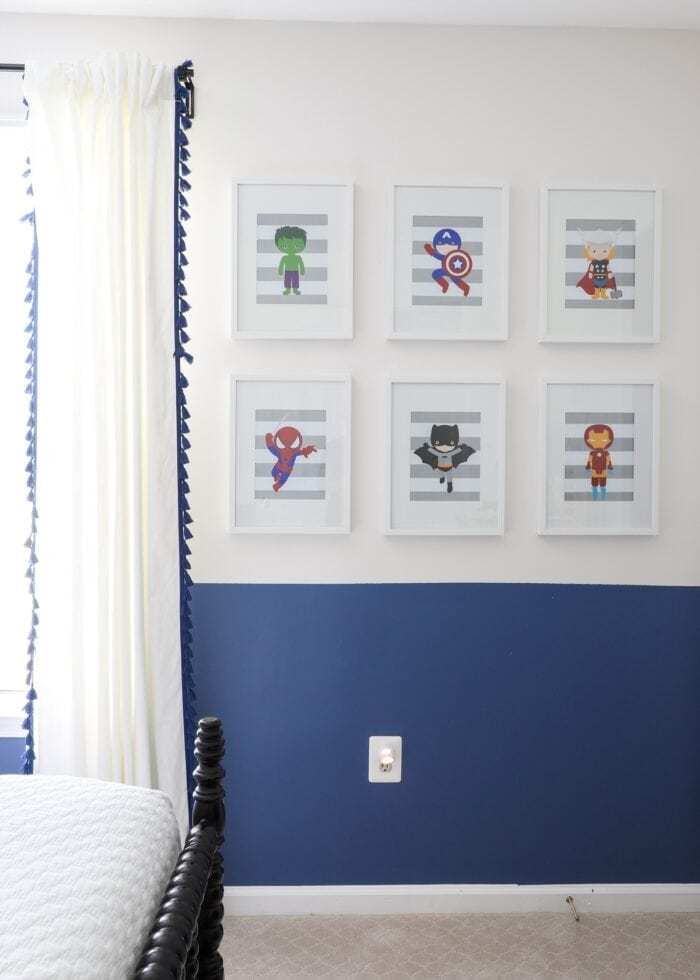
Insides of Bookcases, Drawers, Closets, & Built-Ins
Painting the insides of closets or shelves can be a pain. Reaching into corners and crevices can be tricky, and you always run the risk of ending up with tacky shelves.
Solid color wallpaper allows you to skip the mess but get just a pop of the color you crave!
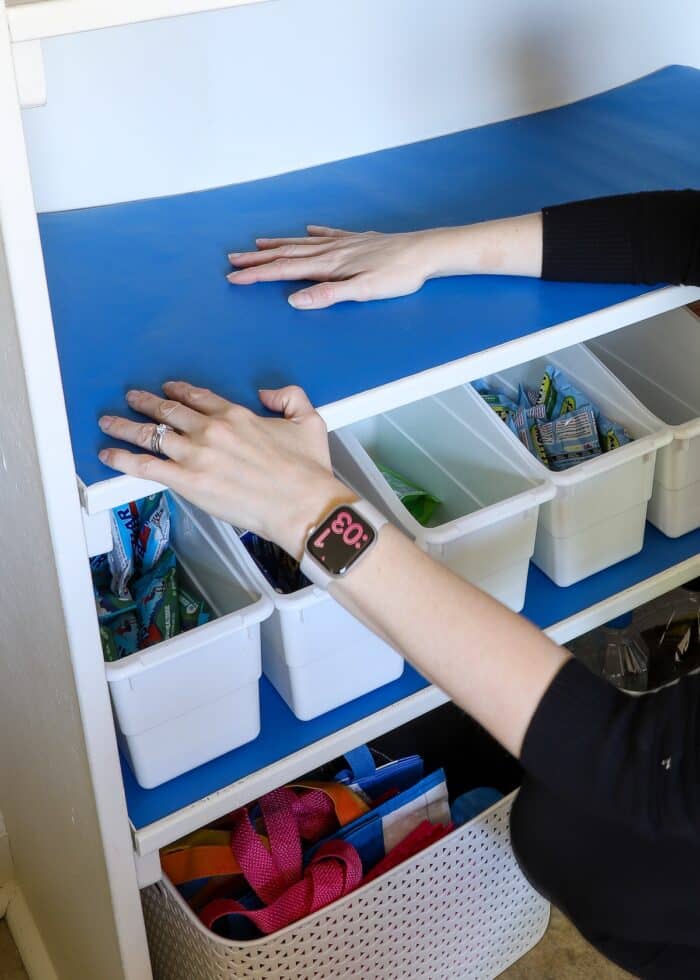
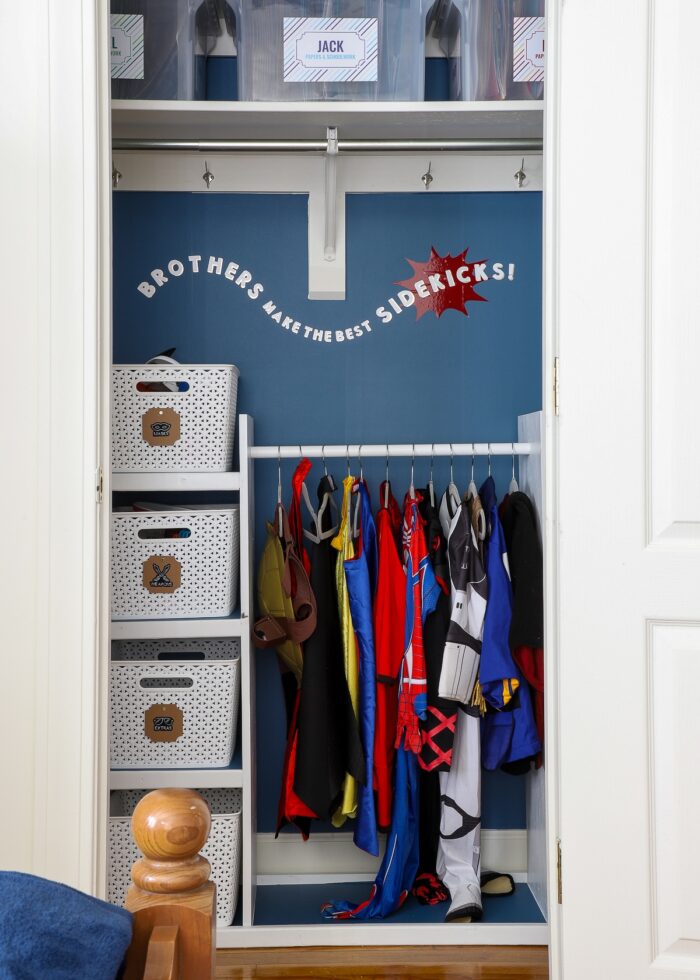
FAQ About Solid Wallpaper
What Is the Texture of Solid Wallpaper Like?
If you’ve worked with a lot of peel-and-stick wallpapers, this paper does not have the soft, smooth, vinyl-like feel. Rather, it has a rougher, paper-like texture. In my experience, this brittle paper quality is what makes it cheaper (compared to vinyl versions), but it’s also exactly what makes it so easy to hang!
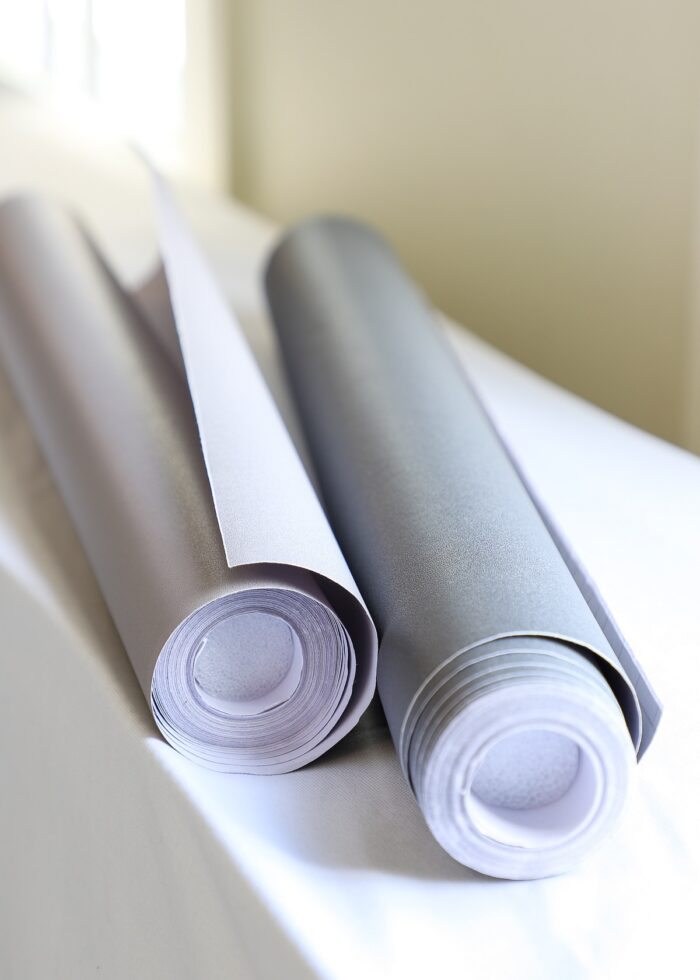
How Do You Cut the Solid Wallpaper?
Although you can use scissors to rough-cut panels, I always find it easiest to use a rotary cutter on a self-healing mat when you need smooth straight lines. To trim off excess along ceilings or baseboards, a sharp craft knife works great!
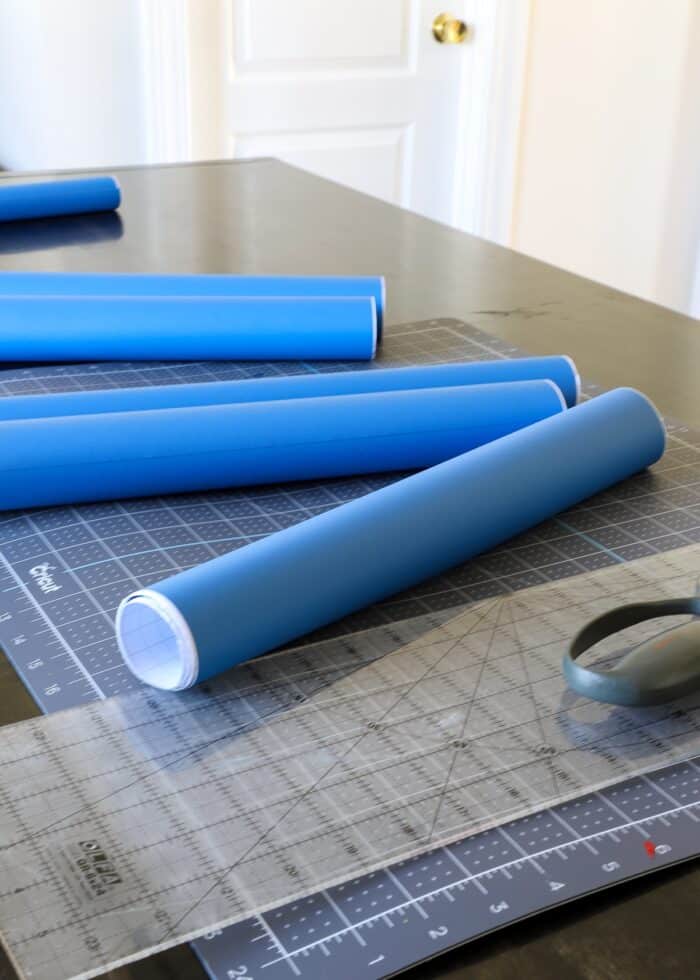
How Do You Apply Solid Wallpaper?
This paper goes up exactly as any other peel and stick paper does. If you need help, see my full tutorial: How to Hang Peel and Stick Wallpaper
Do the Lighter Papers Show the Wall Color Underneath?
That I don’t know. To date, I’ve only used the black, blue, dark grey, and light grey. These colors are 100% opaque and do not show the underlying wall color at all.
My hunch says the lighter papers, especially on a dark wall, could be a bit more transparent; but I can’t say for sure.
Why Not Use Paintable Wallpaper?
I suppose that if you really want the easy-to-take-down nature of wallpaper but need it a very exact color, you could use paintable wallpaper.
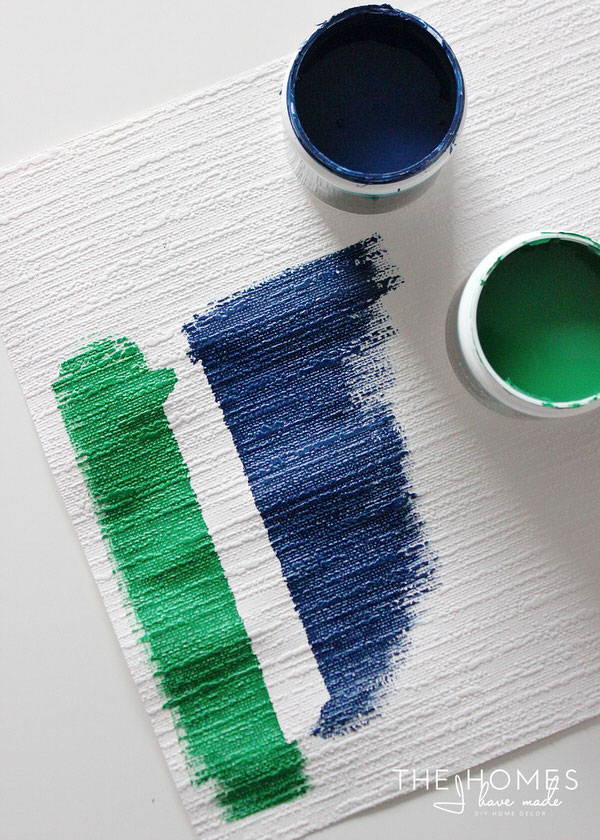
First, keep in mind that this will mean double the project: once to wallpaper and once to paint.
That said, in general, I haven’t had good luck with paintable wallpaper, especially getting it to adhere to walls in a temporary way (What You Need To Know About Paintable Wallpaper). While I most certainly haven’t tried all papers and all application methods currently available, I would definitely recommend thoroughly testing this idea out before committing to a full wall or room.
Are the Seams Visible?
Yes and no. Whether you place the paper perfectly edge-to-edge or overlap it a bit (like I did) to conceal the wall color underneath, yes, you can technically see the seems. But really, only up close.
When you step back or use the room day-to-day, the seams are not really visible to the casual eye. So much that if you need to do an awkward patch job, like I did in our bathroom, you really can’t see the various cuts unless you’re up close!
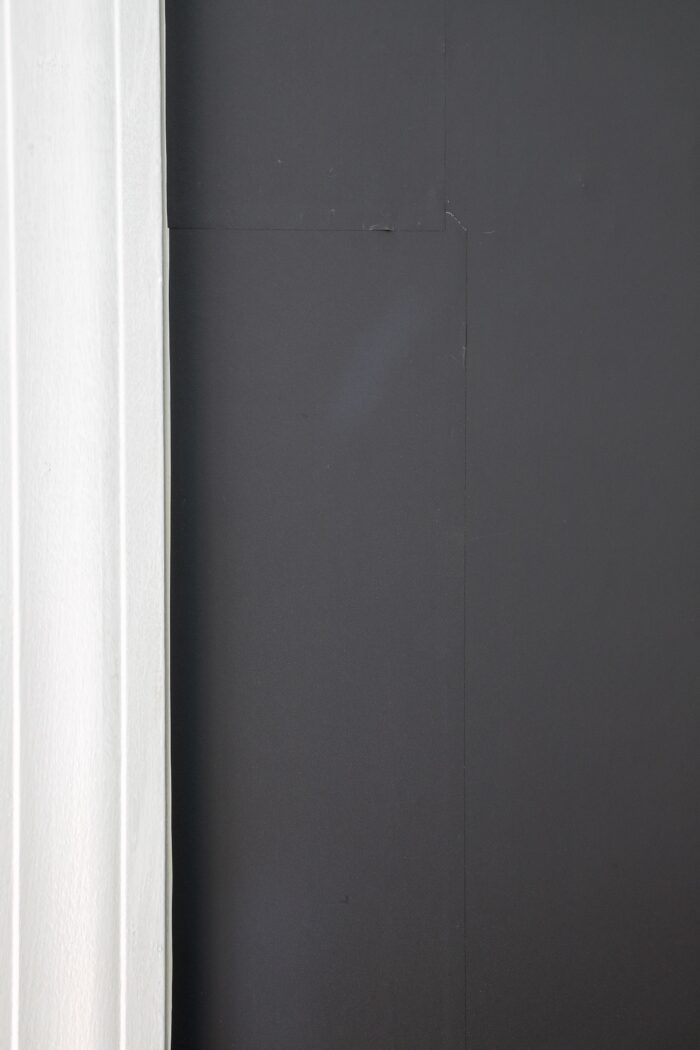
More Great Information on Using Wallpaper In Your Home
Ready to tackle more wallpaper projects in your home? Check out some of my other favorites!
- How to Hang Peel and Stick Wallpaper
- A Complete Guide to Updating Furniture with Wallpaper
- How to Wallpaper the Back of a Bookcase | Step-by-Step
- Wallpapering a Stairwell | Tips You Need to Know!
- How to Hang a Wallpaper Mural | Tips & Tricks for Great Results
- How to Wallpaper a Backsplash
- Can You Put Peel and Stick Wallpaper on the Floor?
- How to Line Drawers with Wallpaper
- Solid Wallpaper | What It Is + Ideas for Using It
- Wallpapering a Whole Room Versus an Accent Wall | What I Learned
- How to Frame Wallpaper as Art
- Does Peel and Stick Wallpaper Damage Walls?
- How to Use Wall Decals to Look Like Wallpaper
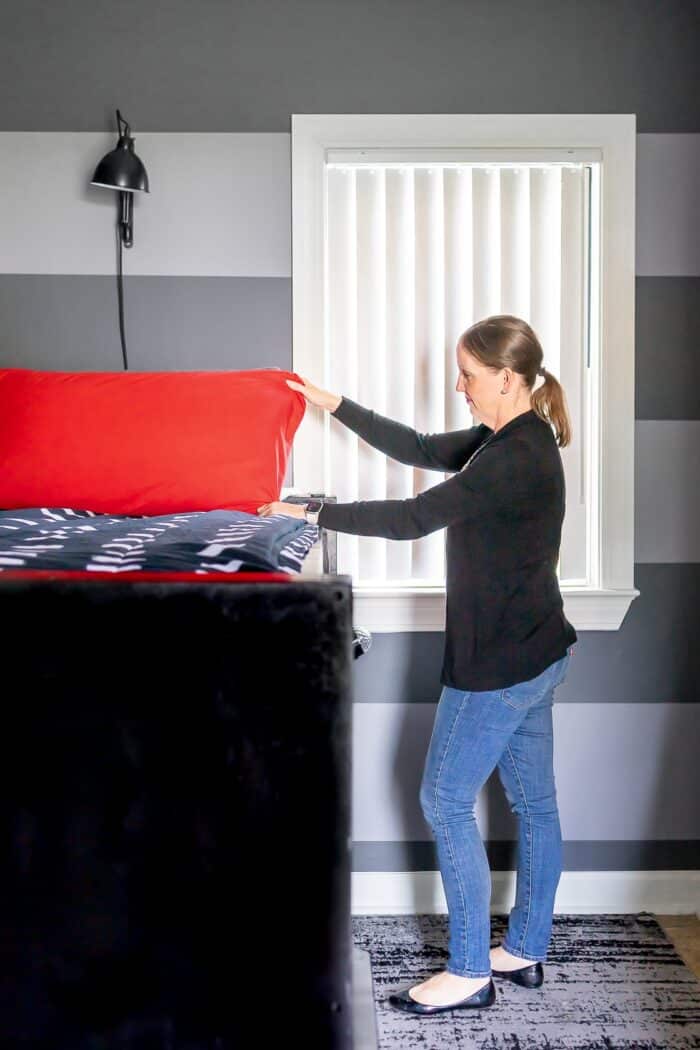
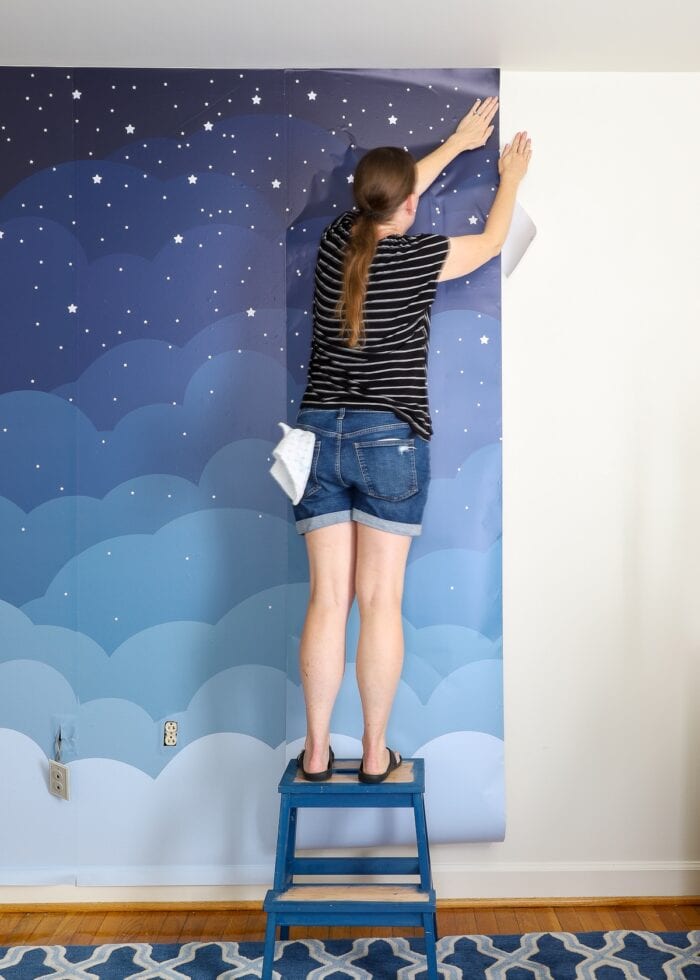
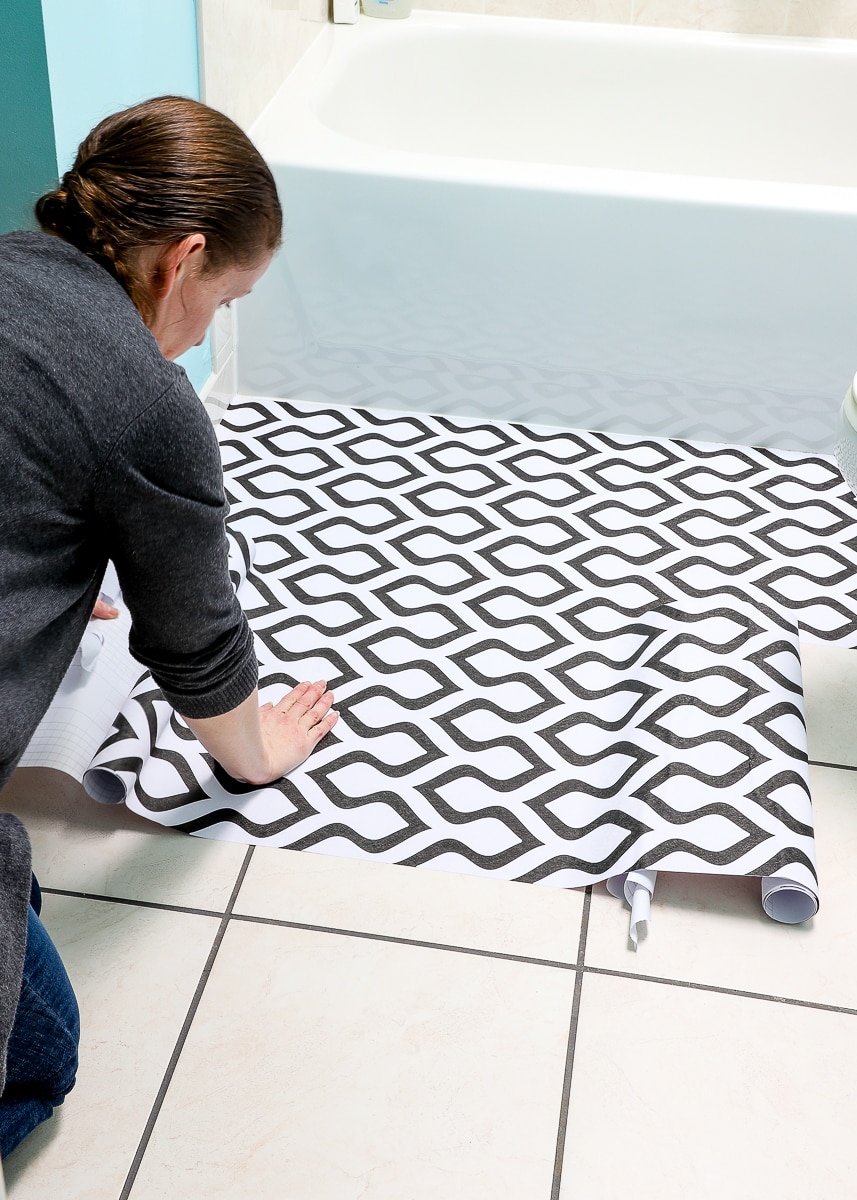
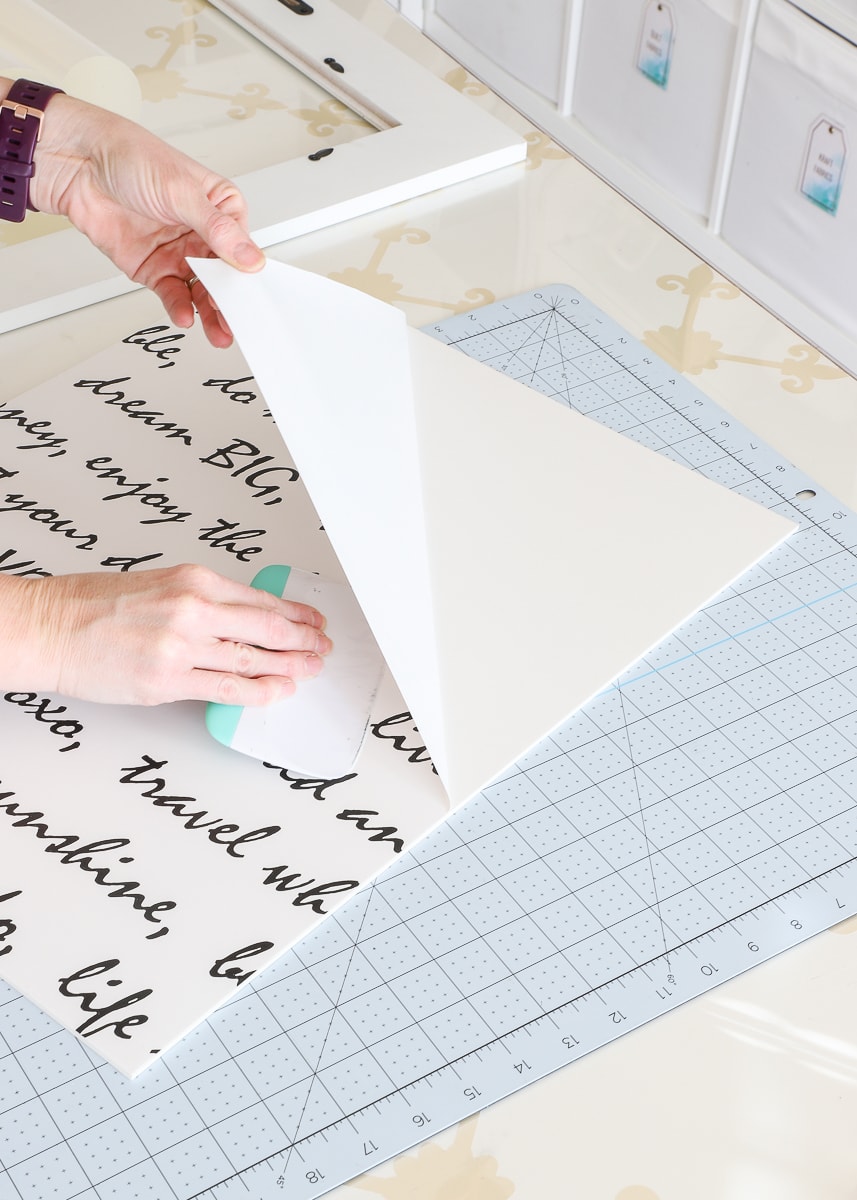
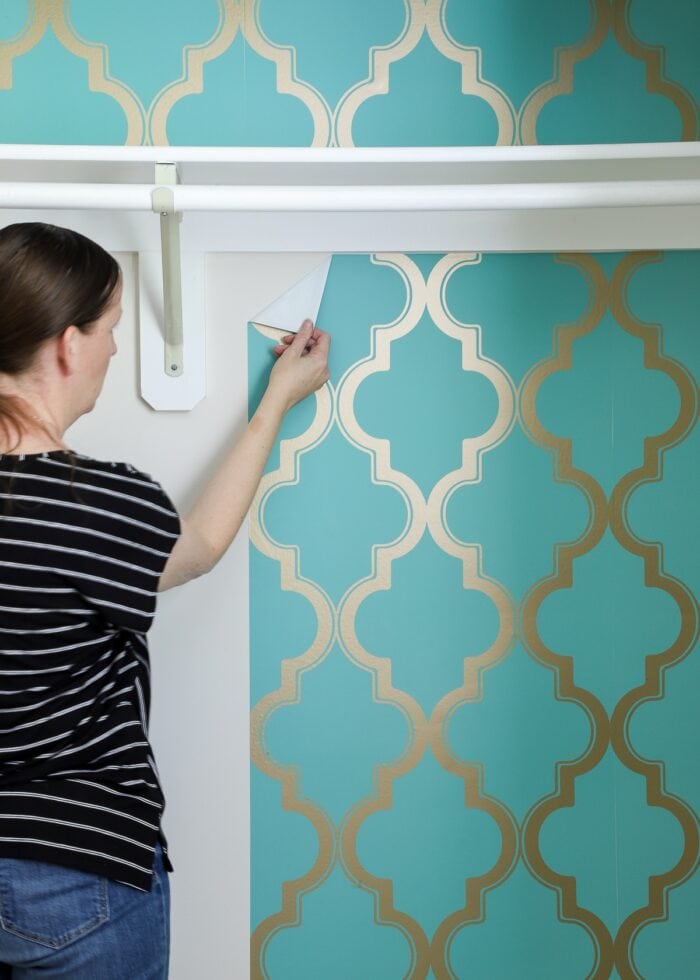
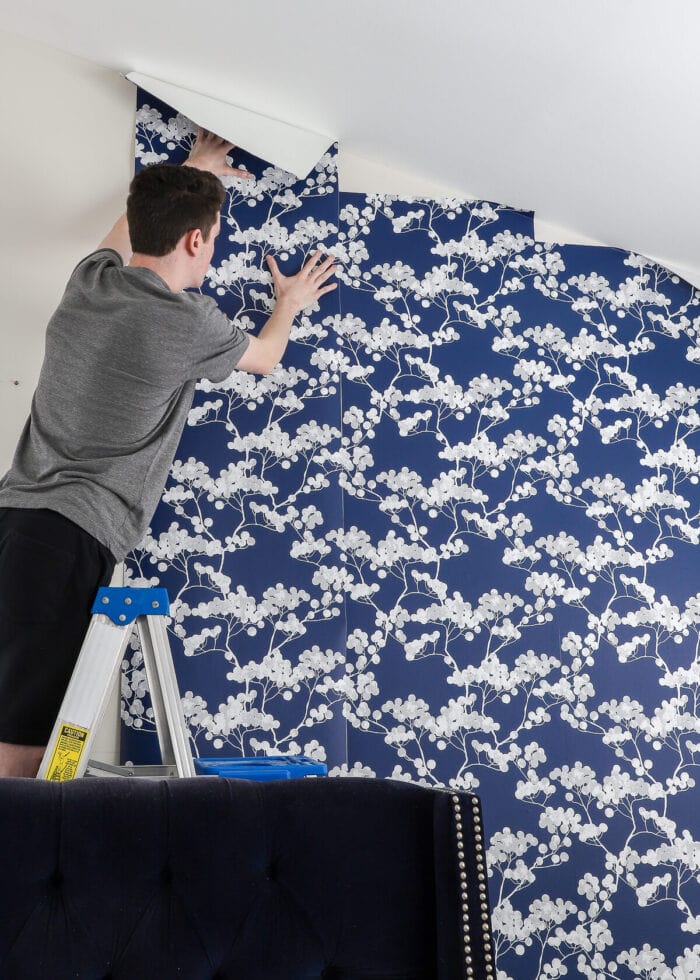
Once upon a time, peel and stick wallpaper wasn’t even a thing. And then when it became a thing, it was available in so few patterns at such high prices that you really couldn’t justify it as a renter. Thankfully, peel and stick products have evolved to not only come in countless patterns and prices but now colors too.
If you’ve never been able to quite understand the appeal of adding solid wallpaper to a wall (or other room feature), I hope this post gives you some fun (and really easy!) ideas to consider!
Megan


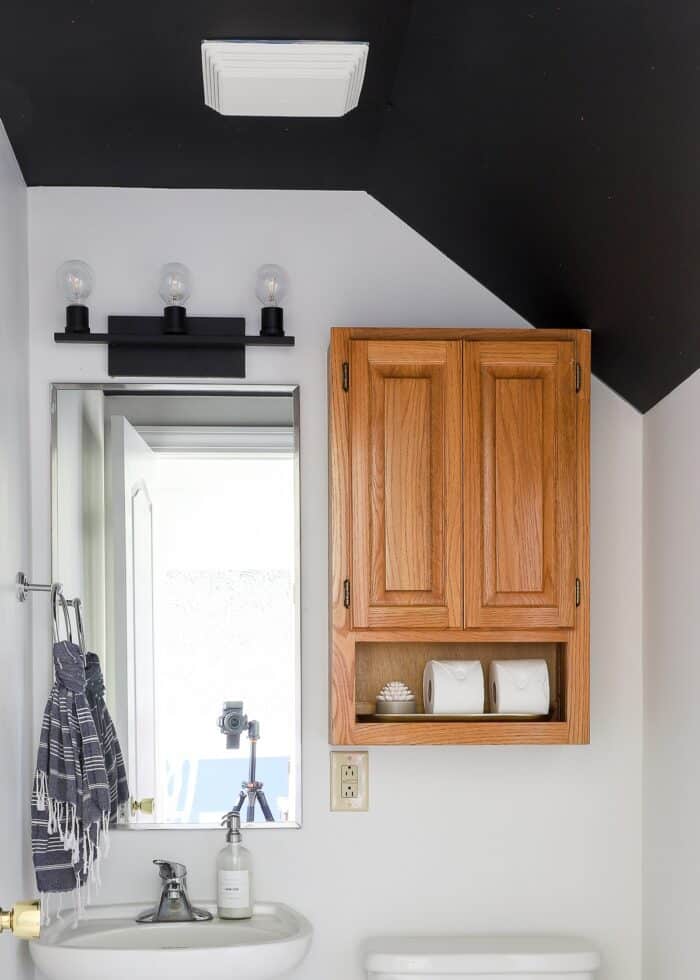
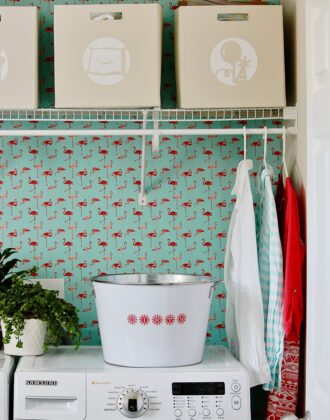
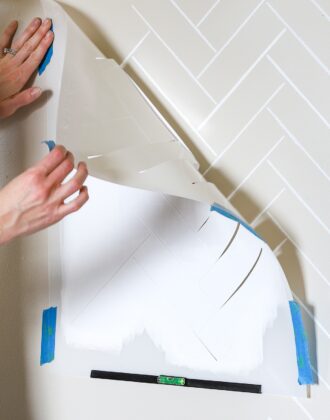
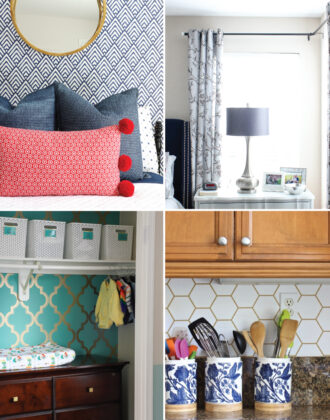
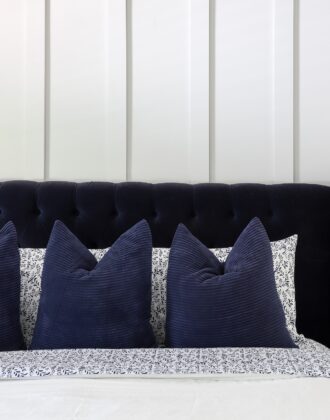

4 Comments on “Solid Wallpaper | What It Is + Ideas for Using It”
Wow. Didn’t even know such a thing existed.
I can see this as a more convenient way to add a dark color to walls. No need to worry about covering it up if you want a lighter color later.
Thank you for this. I’m wondering if you had to do anything special to prepare surfaces to receive this wallpaper. I love the difference it made in your bathrooms.
I love this idea, could it be used over paneling? My daughter just bought a home and the living room is paneled, it’s smooth with the indented panel lines. Could this work? What kind of prep work on paneling would be needed? Thanks! Love your ideas